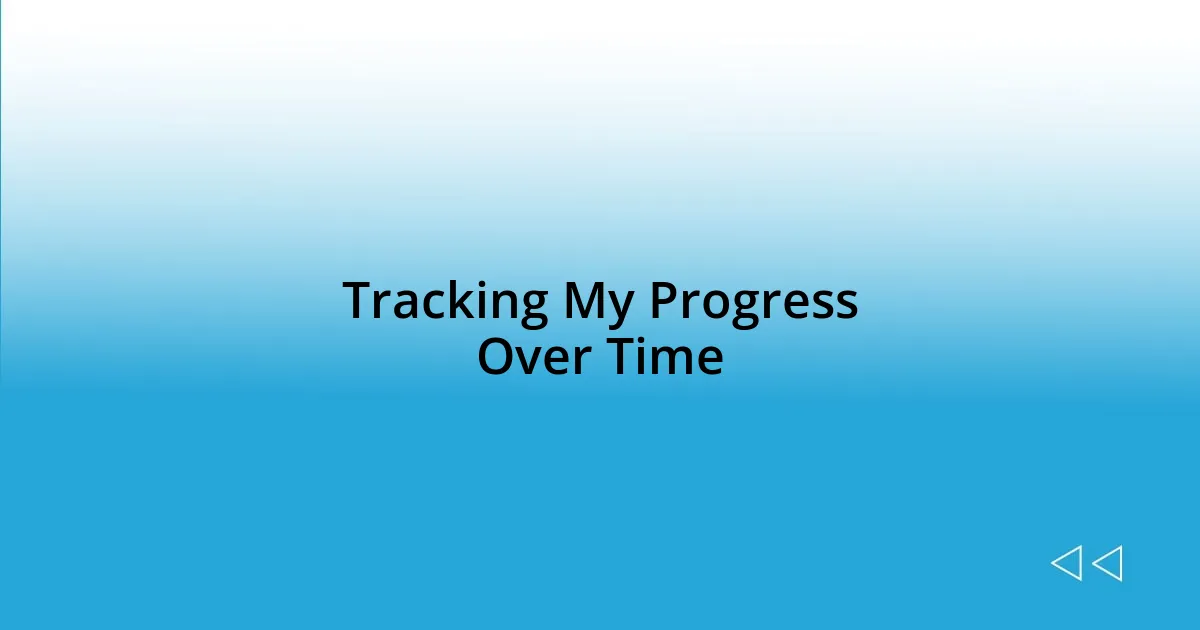Key takeaways:
- Cognitive Behavioral Therapy (CBT) empowers individuals to challenge negative thought patterns, leading to improved emotional well-being.
- Personal experiences of anxiety, negative self-talk, and stress management prompted a journey into therapy, highlighting the importance of seeking support.
- Key techniques like cognitive restructuring, mindfulness, and exposure therapy significantly transformed the author’s approach to managing anxiety and self-perception.
- Ongoing growth after therapy involves applying learned tools in daily life and fostering connections with others, reinforcing the value of shared experiences.

Introduction to Cognitive Behavioral Therapy
Cognitive Behavioral Therapy (CBT) is a powerful tool that helps individuals understand the intricate relationship between their thoughts, feelings, and behaviors. I remember the first time I encountered CBT during a particularly challenging time in my life; it felt like uncovering a roadmap to navigate my inner world. Have you ever felt like your mind was racing out of control? That’s how I often felt before learning to challenge and restructure my negative thought patterns through CBT.
At its core, CBT is based on the idea that our thoughts shape how we feel and behave, not just the situations we find ourselves in. This realization was a revelation for me, as I had often attributed my emotions solely to external circumstances. By learning to identify and replace irrational beliefs with more balanced thoughts, I found a sense of empowerment that I hadn’t experienced before. Isn’t it fascinating to think that by simply shifting our perspective, we can change our entire emotional landscape?
What truly sets CBT apart is its structured approach, focusing on practical skills and strategies that can be applied in real-life situations. I vividly recall working through CBT exercises, which felt both daunting and liberating. This method encouraged me to approach my issues step by step, making the process feel manageable. Isn’t it comforting to know that there’s a concrete framework guiding us through our emotional challenges? Through CBT, I discovered not just coping mechanisms but profound techniques for reshaping my outlook on life.

My Reasons for Seeking Therapy
One of the primary reasons I sought therapy was to address overwhelming feelings of anxiety that had begun to interfere with my daily life. I remember standing in a crowded grocery store, my heart racing and my palms sweating, feeling completely paralyzed by the thought of being surrounded by so many people. This was a wake-up call for me; I realized I needed support to break free from these spiraling thoughts.
Additionally, I found myself caught in a cycle of negative self-talk that affected my self-esteem. I would often look in the mirror and find it hard to recognize the person staring back at me, drowned in criticism and doubt. Seeking therapy became a necessity, as I hoped it would help me rebuild a healthier, more compassionate relationship with myself.
Lastly, I was eager to gain effective coping strategies for managing stress. Life can feel like a whirlwind, and I often felt like I was juggling too many balls while trying to keep the unimportant ones from dropping. Engaging in therapy felt like signing up for a course that would finally teach me how to prioritize what truly mattered while still caring for my mental health.
| Reason | Personal Experience |
|---|---|
| Overwhelming Anxiety | Felt paralyzed in crowded places, prompting a need for support. |
| Negative Self-Talk | Struggled with self-esteem, often feeling disconnected from my own reflection. |
| Coping Strategies | Sought tools to manage stress and prioritize my mental well-being. |

Initial Challenges in Therapy
It’s interesting to reflect on the initial hurdles I faced when starting therapy. Walking into that first session, I felt a cocktail of emotions—nervousness, vulnerability, and hope. I quickly realized that confronting my thoughts wasn’t an easy task; I had been avoiding them for so long. The challenge of being open and honest about my feelings added to that sense of discomfort, but I knew I had to push through it.
Here are some of the key challenges I encountered at the onset of my therapy journey:
- Vulnerability: Sharing personal experiences was daunting, making me feel exposed.
- Resistance to Change: I clung to familiar thought patterns, even when they weren’t serving me well.
- Understanding the Process: Initially, grasping how CBT worked felt overwhelming, like trying to read a complex manual before even starting the project.
I can recall the first time my therapist asked me to identify a negative thought. I sat there, feeling dumbfounded, as if I was staring at a blank canvas. It was hard to engage in the process since I was so used to suppressing my emotions instead of articulating them. The first few sessions often felt like an uphill battle, fighting an instinct to retreat into my comfort zone. But with time, I began to see the potential for growth.

Techniques That Made a Difference
One technique that truly changed my perspective was cognitive restructuring. I remember sitting on my therapist’s couch, grappling with a particularly harsh self-critique about my work. With her guidance, I learned to challenge that negative thought. I began asking myself, “Is this really true?” and “What evidence do I have to support this?” This simple shift helped me spot the inaccuracies in my thinking, allowing me to cultivate a more balanced self-view.
Another impactful method was the practice of mindfulness. I often found myself in a whirlwind of anxious thoughts, racing from one worry to the next. My therapist introduced me to mindfulness exercises, like simply focusing on my breath or doing a body scan. I still recall the sense of clarity I felt when I first tried to ground myself in the present moment. It was liberating to realize that I had the power to observe my thoughts without being consumed by them.
Exposure therapy was also a transformative technique in my journey. I vividly remember my therapist guiding me through gradual exposure to social situations that triggered my anxiety. It felt daunting at first, but once I started small—like stepping into a café—I recognized that the anxiety diminished over time. I couldn’t help but wonder, why had I waited so long to face this fear? Each small success built my confidence, proving that I could handle situations I once thought were impossible.

Tracking My Progress Over Time
Tracking my progress during therapy was like keeping a journal of my inner evolution. I started using a simple chart, where I wrote down my negative thoughts alongside alternative, positive ones. I was surprised by how much clarity this brought me. Each entry was a window into my mindset, revealing patterns I hadn’t noticed before. Have you ever tried writing down your feelings? It can illuminate things you might otherwise overlook.
As time went on, I began to recognize subtle changes in my reactions and thought processes. One day, I caught myself responding differently to a stressful situation at work. Instead of spiraling into self-doubt, I remembered my therapist’s advice to practice self-compassion. That felt transformative! It made me wonder: how often do we underestimate the power of small shifts in perception?
I also relied on regular check-ins with my therapist to assess my growth. These sessions became a vital milestone, marking my journey. I’d share my successes, no matter how small, and it was incredibly reassuring to hear her affirm my progress. Each conversation reinforced the idea that growth isn’t always linear; it’s filled with twists and turns. This realization reminded me that it’s okay to celebrate incremental victories along the way.

Insights Gained Through Therapy
I gained profound insights through therapy that reshaped my understanding of myself. For instance, I learned to recognize the difference between my thoughts and reality. There was a time when I believed every negative thought I had to be a fact. This realization—that my mind often distorted the reality—I can’t express how freeing it was. How often do we let our minds dictate our self-worth?
Another insight that struck me deeply was the importance of self-compassion. I vividly remember a moment when I made a mistake at work and immediately went into self-blame mode. My therapist gently reminded me, “Would you speak to a friend the way you’re speaking to yourself?” That simple question made me pause. I started to practice talking to myself as I would to a loved one, and what a difference that made! It’s incredible to think about the impact of kind words, even when they’re directed inward.
I also discovered the value of vulnerability. Initially, I thought showing my emotions made me weak. However, in therapy, I realized that opening up about my struggles fostered genuine connections with others. Reflecting on moments when I shared my fears in group therapy was eye-opening. Those moments not only deepened my relationships but also revealed that many people share similar feelings of uncertainty. Isn’t it comforting to know we’re not alone in our struggles?

Moving Forward After Therapy
I remember when I stepped out of therapy for the last time, the world felt both familiar and changed. It was like emerging from a cocoon; the lessons I learned were now part of me, guiding my choices. I realized that the tools I acquired weren’t just for use in the therapy room but were built to be applied in my everyday life. Have you ever wondered how much your past experiences shape your present decisions?
As life resumed its usual pace, I found myself encountering challenges I had previously faced with anxiety. But this time felt different. I deliberately practiced reframing negative thoughts, a technique I honed during therapy. For instance, instead of thinking, “I can’t handle this,” I switched to, “I’ve responded to tough situations before, and I can do it again.” This shift empowered me. Hasn’t there been a moment when changing your internal dialogue made a significant difference?
I also made a conscious effort to build a support system around me, emphasizing connection over isolation. I started sharing my experiences with friends over coffee—those candid conversations often left us both feeling lighter and more understood. Reflecting on my journey, I recognize that moving forward means not only using the tools I developed but also fostering ongoing dialogue with those who lift me up. Isn’t it amazing how sharing our stories can create bonds and resilience?














